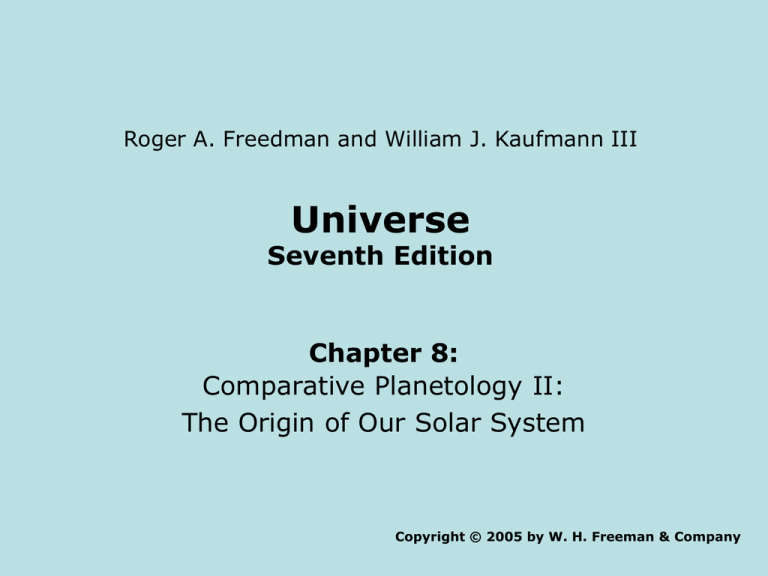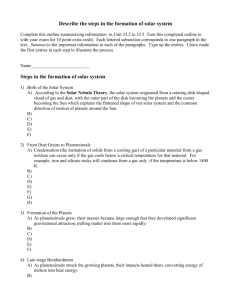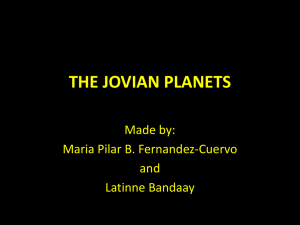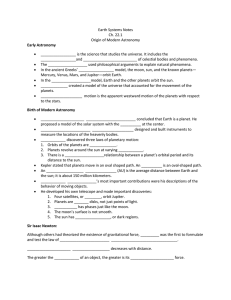Formation of Solar System
advertisement

Roger A. Freedman and William J. Kaufmann III Universe Seventh Edition Chapter 8: Comparative Planetology II: The Origin of Our Solar System Copyright © 2005 by W. H. Freeman & Company Solar System attributes • Rocky, small terrestrial planets, Gaseous (hydrogen and helium), giant jovian planets • Planets orbit sun in the same direction • Terrestrial planets orbit closer than jovian planets Abundances & heavy elements • Hydrogen and helium 98%, heavy elements 2% • Why? Big bang formed lighter elements and stars produced heavier elements. • Smaller abundances means smaller planets (Item 1) Radioactive dating and the age of Solar System • • • • Radioactivity Rocks on Earth ~ 4 billion years Rocks on moon ~ 4 billion years Meteorites ~ 4 billion years • Hence, Solar system age ~ 4 billion years !!! Gravitational energy of contracting gas to thermal energy is “KelvinHelmholtz contraction” Proto planetary disk • Item 2: Planets orbit sun in the same direction Planets formed by accretion of planetesimals and gases • For a given pressure, “condensation temperature” determines gas or solid phase. • Water, methane, ammonia ~ 100 K • Rocky substances ~ 1500 K • Hydrogen, helium ~ 0K • So hydrogen and helium always are in gas phase. • Planetesimals: Chunks of rocks coalesced to form asteroidlike objects (~ 1 km) • Protoplanets: Planetesimals collided to form moon size objects. Chemical Differentiation Core accretion of outer planets • The gravity of Jovian planets sent most of the asteroids either away from SS or crashed into planets to form craters. • Kuiper belt objects ( ex : pluto) formed beyond jupiter but sent away farther by gravity. • Some went even as far as 50,000 AU and formed “Oort cloud”. • Comets come from Kuiper belt or Oort cloud T Tauri wind Extrasolar planets







